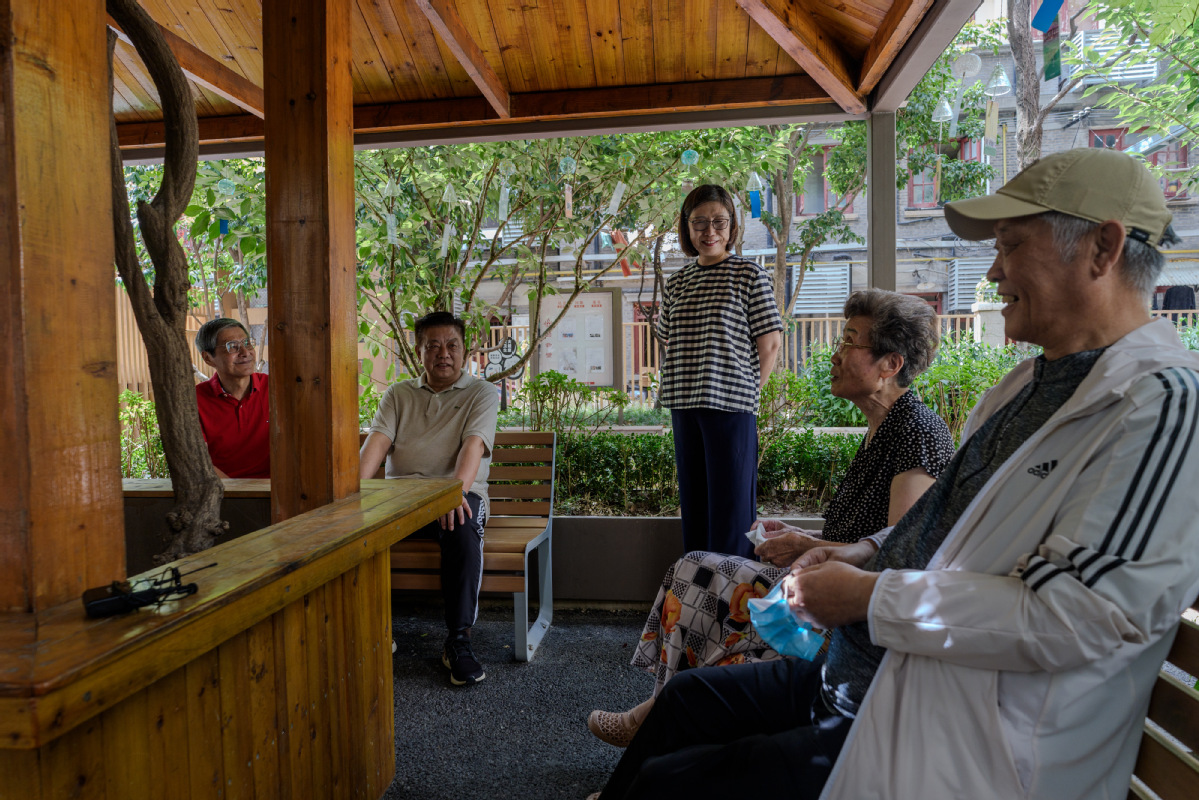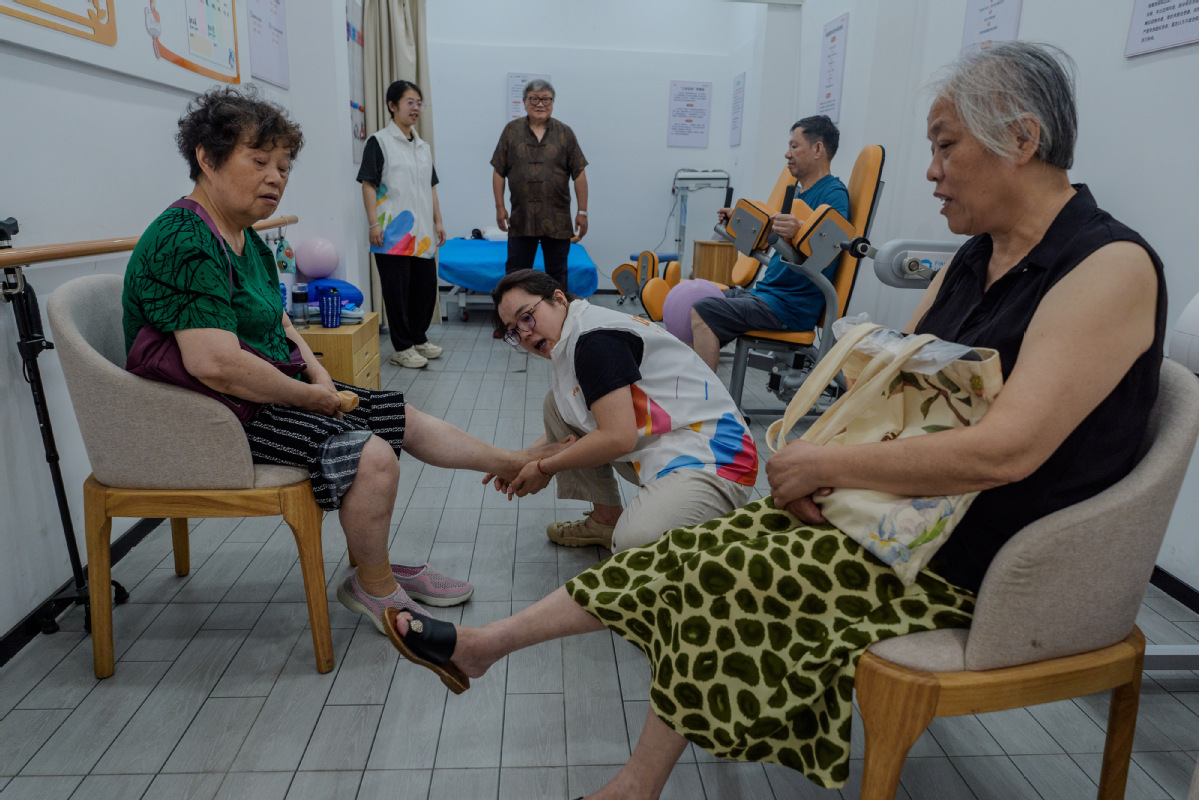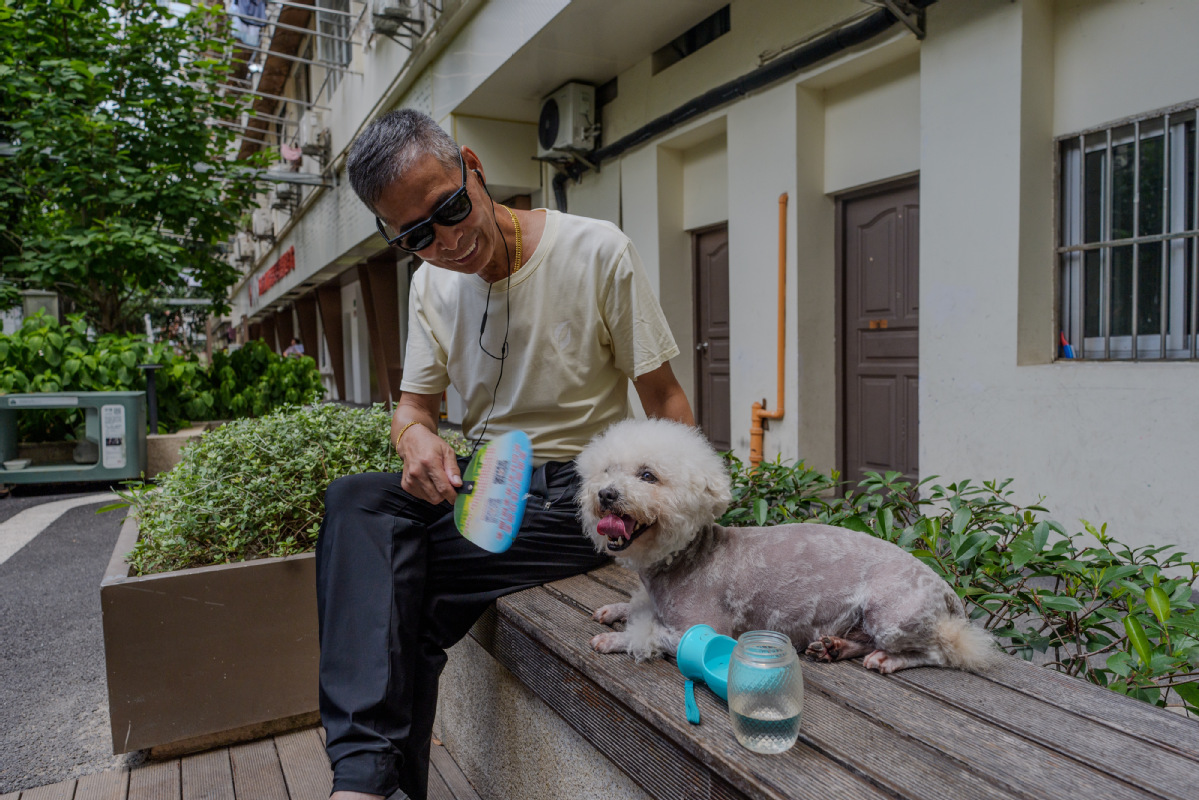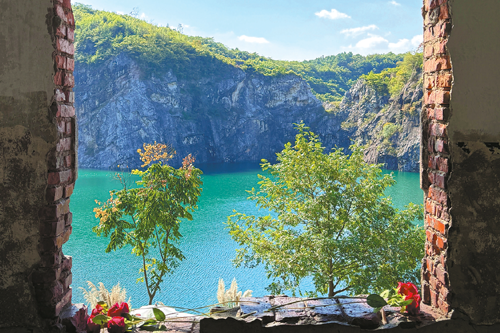Residents' needs given priority in urbanization
Community's transformation reflects philosophy of balanced development


Just a 10-minute walk from the tourist throngs of Shanghai's Bund, and hidden behind the glitzy skyline of pedestrian malls and luxury hotels, lies a residential community that has undergone a quiet transformation over the past three years.
Once a crumbling cluster of 1980s-era walk-ups plagued by leaking roofs, tangled power lines and cluttered alleyways, the Ruyili residential community has re-emerged as a model for a concept long championed by China's top leadership: a city built "by the people and for the people".
"I never imagined I'd live to see this place become what it is now," said Luo Jianshe, 72, a longtime resident of Ruyili. "Before, you had to step over puddles and duck under pipes just to get home. Now it's like walking through a garden."
Between August 2022 and April 2023, the community — named after the ruyi, a traditional scepter symbolizing good fortune — underwent a sweeping renovation and is now quite livable again.

Today, Ruyili is a "car-free community", the first of its kind in its subdistrict. Mopeds and bikes are neatly stored in an underground garage. Inside, families stroll along clean walkways lined with planters, elderly residents chat beneath shade canopies, and children play where trash bins once stood.
The urban renewal project reflects a broader vision, laid out by President Xi Jinping, that cities must be built by the people and for the people.
Xi, who is also general secretary of the Communist Party of China Central Committee, introduced the concept during a 2019 fact-finding trip to Shanghai.
Whether it involves urban planning or construction, developing new districts or upgrading old ones, cities must adopt a people-centered approach, one that prioritizes the public's needs and carefully balances spaces for work, life and nature, Xi emphasized.
The vision, which was also included in the report to the 20th National Congress of the CPC in 2022, enshrines not only livability and public participation, but also the protection of cultural heritage and the coordination of urban space, industry and ecology. It's a vision deeply rooted in Party leadership and long-term urban planning, analysts said.
"This concept vividly embodies the principle of putting people first in urban development," said Lin Chen, a professor at Renmin University of China's School of Applied Economics.
"It stresses that cities should prioritize making life more convenient, comfortable and fulfilling for their residents, while reserving the best resources for the people," Lin said.
China's rapid urbanization in the past decade has made such a vision increasingly relevant. By the end of 2024, around 67 percent of the country's 1.4 billion people — over 943.5 million — were living in urban areas. Cities now generate more than 60 percent of national GDP.

Yet with megacities like Beijing and Shanghai grappling with the challenges of scale, the government is pivoting toward more sustainable and inclusive growth.
That includes renewed attention to cultural preservation, echoing Xi's earlier calls to avoid "shortsighted demolitions and hasty construction".
In Beijing, for instance, the Central Axis — a cultural and architectural spine running through the city — was added to UNESCO's World Heritage List last year. In Shanghai, architectural preservation and neighborhood revitalization go hand in hand.
Zou Xun, deputy chief architect at the Shanghai Institute of Architectural Design and Research, said the vision that cities must be built by the people and for the people is now leading a new era of thoughtful, community-driven urban transformation.
"It means starting from the goal of improving residents' quality of life, aligning with the fast pace of urban development, and ensuring that the broadest segments of the public benefit from progress," he said.
One notable aspect of Shanghai's approach, he added, is its focus on an aging population. According to municipal authorities, 37.6 percent of the city's population with permanent household registration, or hukou, was age 60 or above by the end of 2024.
Many older neighborhoods undergoing renovation are also being adapted for senior living, with features such as barrier-free access and shared community dining halls offering nutritious meals at affordable prices.
Zhang Ming, a professor at Tongji University's College of Architecture and Urban Planning, noted that many of Shanghai's mass housing projects from the 1980s were built quickly to improve living conditions for the general public. Today's upgrades must consider long-term needs, he said.
"At the same time, we should be careful to preserve the historic charm of these communities," Zhang said. "Many of them reflect the unique cultural fusion of East and West that emerged after Shanghai became a port city."
Lin Weimin, Party secretary of the Shanbei residential area, which includes Ruyili, attributed the success of the renewal to embracing "whole-process people's democracy", ensuring that residents were actively involved in every step.
"By involving residents in decision-making, from how the community should be improved to what changes should be made, the community handed over the power to the people.
"This project not only facilitated the upgrade of the residential compound's infrastructure, but also ignited a sense of agency among the residents," she added.
Contact the writers at xuwei@chinadaily.com.cn























